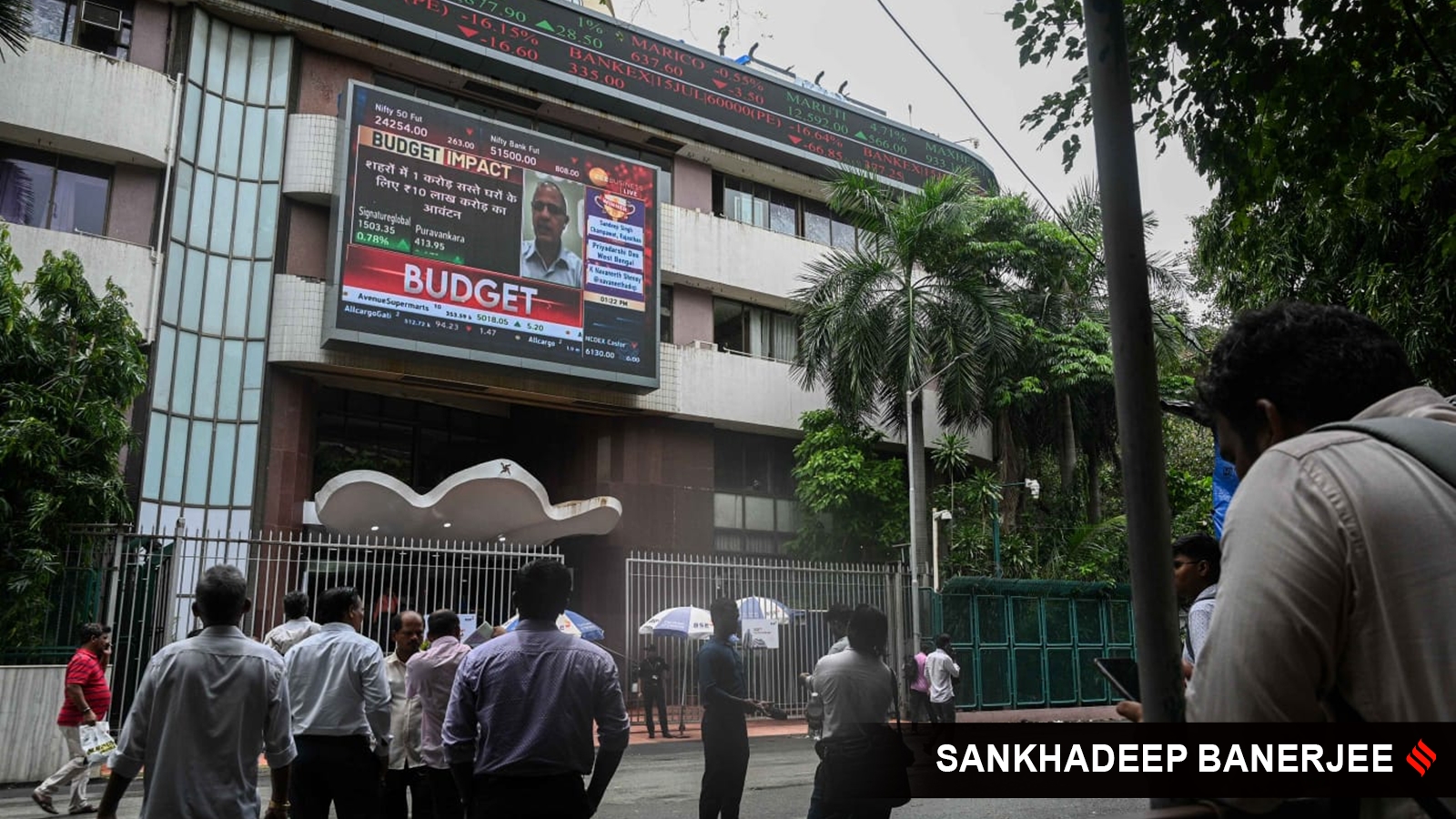The Union Budget presented on Tuesday was expected to set out a roadmap for the country’s growth and development. Did it live up to expectations?
To answer this question, it is important to understand the economic context in which the Budget was presented. Despite official data showing that the Indian economy grew at 8.2 per cent in 2023-24, evidence suggests a worrying slowdown in aggregate demand. Concerns have already been expressed about consumption. In 2023-24, private consumption is estimated to have grown by a mere 4 per cent, a steep decline from the 11 per cent growth rate in 2021-22 when the economy was recovering from the pandemic. Much of this slowdown can be attributed to economic distress in rural India.
In addition, the two biggest drivers of growth, private investment and exports, have not been performing well. The government has consistently increased its spending on infrastructure since 2020-21 in the hope that this would “crowd-in” private investment. However, private investment continues to be weak, with no sign that things are going to turn around any time soon. In fact, new project announcements (as measured by CMIE) have been declining since September 2023, suggesting that private investment might even start falling. The news is not great on the exports front either. Merchandise exports fell by 3 per cent in US dollar terms during 2023-24. While services exports have been doing better, they have also slowed considerably.
The demand slowdown has created a jobs crisis, perhaps the biggest challenge confronting this government. By June 2024, India’s unemployment rate had increased to 9.2 per cent according to CMIE data, up from 8 per cent in 2023.
The ask from the Union Budget therefore was a policy framework that would encourage the private sector to expand capacity, generate employment and thereby pave the way for sustained, rapid growth. This growth strategy had to be accompanied by fiscal consolidation to bring down deficits and debt levels that have been running high since the pandemic.
Analysed against this ask, the Budget was characterised by both hits and misses.
From the macro stability perspective, this Budget exceeded expectations. It reduced the projected fiscal deficit for 2024-25 to 4.9 per cent of GDP from 5.1 per cent announced in the interim budget. As a result, the government is now in a better position to achieve its long-stated goal of reducing the deficit to less than 4.5 per cent of GDP in 2025-26. The Budget also improved the quality of government expenditure, increasing the share of capital expenditure in total expense to 23 per cent in 2024-25, from 12.5 per cent in 2019-20. This is the highest share of capex in 3 decades.
From the growth perspective, the government, perhaps for the first time, acknowledged the problems in the economy, albeit indirectly. The government’s concerns showed in the announcement of a slew of measures targeted towards agriculture, employment, skilling, MSMEs, and even the tweaks in the direct tax regime. The concerns were also reflected in the decision to keep capex unchanged at Rs 11 lakh crore, the same level as the interim budget. Had the economy truly been growing rapidly, there would hardly be a need for the government to continue to stimulate it, especially given the fiscal constraints.
Having said that, the Budget did not outline an economic strategy to tackle the problems nor did it lay out an economic vision for the next few years. Instead, the plan seemed to be to address the deeper structural problems using schemes. It is not clear how these schemes will solve the problems, or even, how they will really work.
For instance, one of the main Employment Linked Incentive schemes is to give Rs 15,000 to new employees in the formal sector. It is not clear who is the targeted beneficiary of this incentive given that availability of formal sector jobs itself is a big problem. Likewise, reimbursing employers for their EPFO contributions on new employees for two years (up to Rs 3,000 per month) is likely to have only a marginal impact on the cost to companies and hence on job creation.
The other schemes also seem too small to address the problems. In the agricultural sector, the budgetary allocation for MGNREGA was kept unchanged at the same nominal level as in the interim budget, even though the rural economy is in significant stress. The tweaks in the direct tax slabs under the new tax regime are also likely to have only a marginal impact on household demand. Similarly, the Budget announced that additional tribunals would be set up to speed up resolution under the Insolvency and Bankruptcy Code (IBC, 2016), even though the real problem lies in staffing of the existing tribunals.
A glaring gap in the budget was a lack of mention of privatisation. PSUs have been witnessing high valuations in the stock market making it an opportune moment to sell them off to interested buyers. This could also help boost private investment. A good example of this has been Air India privatisation where the new owners have been making huge investments to turn around the company.
Another big miss was not providing a strong fillip to merchandise exports and making the most of foreign demand for goods, given sluggish domestic demand. The Budget did announce reductions in customs duties for some items but given the state of the economy, the need of the hour was a major reversal of the protectionist stance adopted since 2015 by significantly lowering import tariffs, dismantling trade barriers, and signing free trade agreements with major trading partners.
In summary, the Union Budget scored well on fiscal stability but could have done better by setting out a well-defined growth strategy. The Finance Minister did mention that the government is working on some fundamental, structural reforms without mentioning any details or timelines. We can only hope that these reforms will demonstrate that the government has a better grasp on the economy’s underlying problems.
The writer is associate professor of Economics, IGIDR



